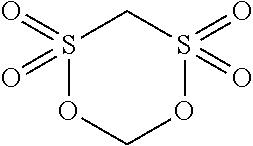Lithium ion secondary battery and charging method therefor
a secondary battery and lithium ion technology, applied in the direction of secondary cell servicing/maintenance, cell components, sustainable manufacturing/processing, etc., can solve the problems of degradation of characteristics and interference with the formation of a uniform protective film
- Summary
- Abstract
- Description
- Claims
- Application Information
AI Technical Summary
Benefits of technology
Problems solved by technology
Method used
Image
Examples
examples
[0052]The present invention is next described in greater detail with regard to Examples.
[0053]A lithium ion secondary battery was assembled using amorphous carbon coated graphite as the negative electrode active material; initial charging composed of a preliminary charging step, a degassing step, and a main charging step is carried out; following which charging and discharging was repeated to appraise the performance of the lithium ion secondary battery. A plurality of lithium ion secondary batteries were here produced while varying the specifications of the amorphous carbon coated graphite and the amount of binder in the negative electrode active material layer, and further, varying the charging conditions in the preliminary charging step in initial charging to appraise the performance regarding a plurality of samples, i.e., lithium ion secondary batteries. The specific surface area and coverage factor were used as the specifications of the amorphous carbon coated graphite.
[0054][F...
PUM
| Property | Measurement | Unit |
|---|---|---|
| charging capacity | aaaaa | aaaaa |
| specific surface area | aaaaa | aaaaa |
| mass percent | aaaaa | aaaaa |
Abstract
Description
Claims
Application Information
 Login to View More
Login to View More - R&D
- Intellectual Property
- Life Sciences
- Materials
- Tech Scout
- Unparalleled Data Quality
- Higher Quality Content
- 60% Fewer Hallucinations
Browse by: Latest US Patents, China's latest patents, Technical Efficacy Thesaurus, Application Domain, Technology Topic, Popular Technical Reports.
© 2025 PatSnap. All rights reserved.Legal|Privacy policy|Modern Slavery Act Transparency Statement|Sitemap|About US| Contact US: help@patsnap.com



